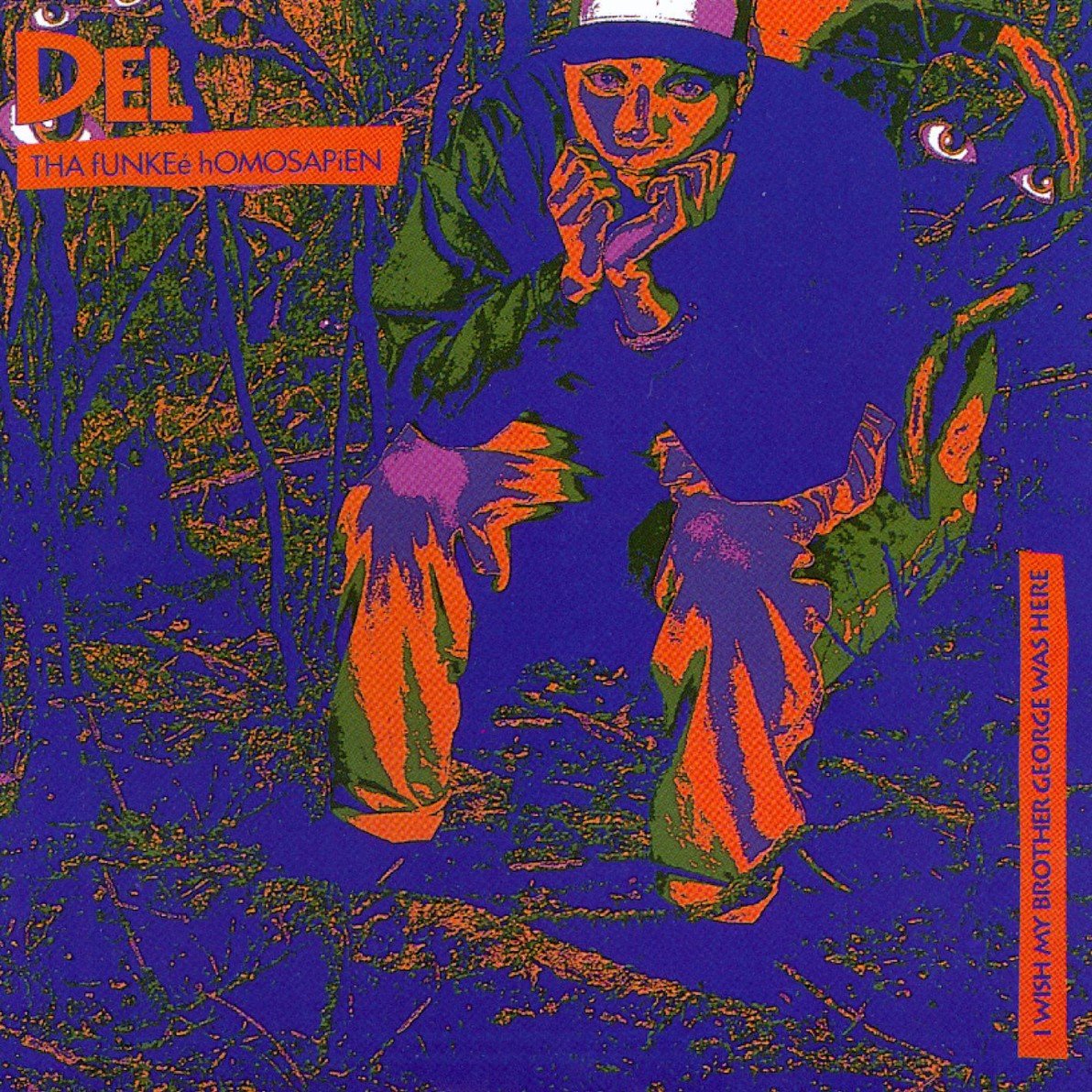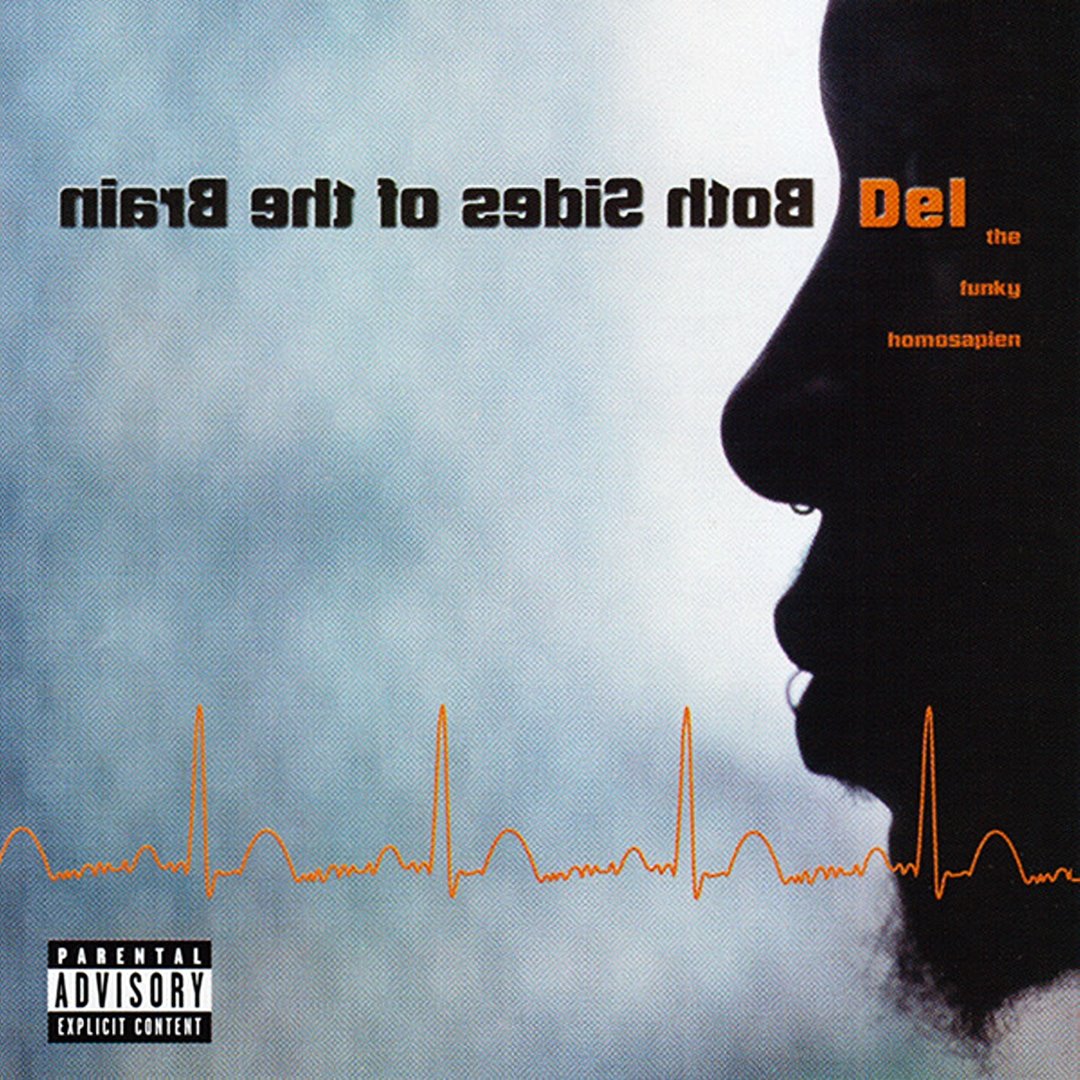Happy 30th Anniversary to Del the Funky Homosapien’s second studio album No Need For Alarm, originally released November 23, 1993.
Thirty years ago, in 1993, the Hieroglyphics crew really changed the left-of-mainstream community of rappers and crews making music. Starting in September of that year, with the release of Souls of Mischief’s debut album ’93 ’til Infinity, the Oakland-based collective set the bar sky high for what lyric oriented hip-hop could sound like. Over the next 12 months, members of the group would release projects, introducing their individual talents to the world. Or, in the case of Teren “Del the Funky Homosapien” Jones, re-introduce himself, as he dropped his sophomore album No Need For Alarm.
A little over two years earlier, Del the Funky Homosapien had delivered his debut long player I Wish My Brother George Was Here (1991)on Elektra Records. Guided by his cousin Ice Cube and produced by the Boogie Man production team (DJ Pooh, Bobcat, and Rashad), his inaugural album showcased Del’s distinctive approach to his music. Cube and Elektra had worked to position Del as a later-day George Clinton disciple, and as a result, he loaded his songs with a bevy of Parliament-Funkadelic references and rhymed over blissed-out funk tracks. When he wasn’t trying to save the funk, Del spoke from the perspective of the every-man. He was the guy struggling to catch the bus or ducking hoods out to jack him for his sneakers and jewelry.
No Need For Alarm sounds and feels different than I Wish My Brother George Was Here. It’s not necessarily better or worse, but it’s probably more influential overall. It’s an excellent exercise in style and substance.
After I Wish… dropped, Del stopped working professionally with Ice Cube. It’s never been completely clear why. There’s some speculation that since I Wish… didn’t sell as much as Cube and to the extent that the record label would have liked, he was no longer a priority as an artist. There’s also speculation that Del chafed at the musical direction that the first album was taking him, so he decided to go his own way.
And Del’s “way” was to create an album with little to no crossover appeal, more raw than polished. So, gone were the odes to sunny meadows and Dr. Bombay, in their place a multitude of tracks dedicated to the art of ripping emcees and establishing that Del was the best around. The album isn’t nearly as fun or as whimsical as I Wish…, but it is definitely impressive as a showcase for pure lyrical skill.
Del had been moving in this direction since almost immediately after releasing I Wish… The B-sides to that album’s singles were much closer to what was to come on No Need For Alarm. “Burnt” was a posse cut featuring an early configuration of Hieroglyphics, (a Phesto-less Souls of Mischief and Casual) with each emcee rhyming over a different beat. “Eye Examination” foreshadows the direction of Del’s production. It’s one of Del’s most introspective and claustrophobic tracks, featuring him rhyming over a muddy distorted sample of George Benson’s version of “White Rabbit.”
No Need For Alarm is produced almost entirely by members of the Hiero crew, including Casual, Snupe, Domino, A-Plus, Jay Biz, and Del himself. The SD50s, the production crew led by Elektra A&R Dante Ross, produced a pair of tracks as well. In terms of sound, Del decided to transition away from the heavy production aesthetic on I Wish… and move towards sampled loops and dusty crates. He favored a soundscape steeped in CTI Records-based jazz and funk, pairing them with complex and largely inaccessible rhyme styles.
Listen to the Album:
Del sets aside a good chunk of No Need For Alarm to demonstrate his lyrical jousting skills, setting the template for his verbal expression for the rest of his career. Here he first utilizes his unorthodox, bouncy flow that allowed him to hop from stanza to stanza with unique dexterity. Tracks like the album opening “You’re In Shambles,” the title track, “Miles To Go,” and “Treats for the Kiddies” allow Del to get loose. They exhibit the type of braggadocious material that was Hiero’s forte during the mid to late 1990s and helped them lead hip-hop’s underground scene after they released their projects independently.
“Catch a Bad One,” the album’s first single, is the album’s best track. Produced by Casual, the song exemplifies the meat-and-potatoes production aesthetic that appears throughout the album. It features one of the best string-samples to ever appear on a hip-hop record, a brisk cello solo, along with a knocking drum track and an echoing horn sample. Del gives his most creative lyrical performance on the album, stylistically experimenting with creative flows and deliveries, as he rhymes, “Weak MCs make me earl / Hurl as your world is crushed because I gotta make you hush / You gotta be eliminated, the way I demonstrate it / You hate it, but still I am the greatest.”
Though Del spends a lot of time targeting the anonymous suckas throughout No Need For Alarm, he also opts to settle some specific hash. The self-produced “Wack MCs” targets LL Cool J, who had thrown shots at Del in the form of a few disses on “Buckin’ ’Em Down” from 14 Shots to the Dome (1993). Del decided to respond in force, taking LL to task over a pair of verses, rapping, “’Cause ya skill is null and void / And your skull is void, empty / Senseless, defenseless, I rinse this / Plague away with typhoons and you die soon / Why swoon when you hear a ballad, is what I tell a broad / ’Cause L a fraud, he ain’t hella hard / I used to look up, now I wanna cook up / Your brain like bass and maintain ya space.”
Del doesn’t completely forsake the everyman content on No Need For Alarm, this time opting to share his personal feelings and experiences on record. However, Del sounds a lot more bitter this time around. On “Wrong Place,” the album’s second single, he addresses three separate difficult situations that he had to extricate himself from. The final verse, involving getting busted for possession of hash while coming back to the United States from Amsterdam, is based on reality. The self-produced track has Del recounting the incident in intricate detail, often with disdain, while expertly working a sample of BT Express’ “What You Do In the Dark.” Meanwhile, “Boo-Boo Heads” is a contentious break-up track produced by the SD50s, where Del bitterly rails against what sounds like an actual ex-girlfriend. “Don’t Forget” is a bustling track where he addresses the senselessness of street violence, as well as remaining loyal to your friends.
Two-thirds of the slow and rugged “Check It Ooout” work extremely well, as Del uses the first two verses to break down the process of how he critiques hip-hop tracks, what he looks for in a dope song, and how and why he would determine that a wack emcee is wack. He raps, “I love to peep a rhyme / First of all I'm seein' if my man can keep the time / If he go off beat, and it's on purpose / He gotta come back on beat / Or the effort is worthless.” However, with the third verse Del kicks an overlong dis towards journalist Danyel Smith, then a freelance writer for Rolling Stone, who wrote a less than favorable review of a Hiero show. The verse is overlong and mean-spirited, and really awkward to fresh ears.
Del does enlist some of his fellow Hiero representatives to appear on the album. The Domino-produced “No More Worries” features the talents of A-Plus, Casual, and Snupe all rapping over fast-paced percussion and a piano loop from Herbie Hancock’s “Oh! Oh! Here He Comes.” Casual stands out the most among the dope verses, proclaiming “I hope ya learn how to cope / By the time you peep this shit here I'll be three times doper.”
Enjoying this article? Click/tap on the album covers to explore more about Del the Funky Homosapien:
On “Worldwide,” another of the album’s highlights, Del decides to team up with himself, creating the Unicron alter ego. Supposedly a 17-year-old up-and-coming rapper, he sounds suspiciously like Del with his vocals pitched up. “Unicron” would make occasional appearances in the subsequent years, most notably on Swollen Members’ “Left Field.” Oddly, he still sounded like a 17-year-old.
After 13 tracks of confrontation and acrimony, Del ends No Need For Alarm with “Thank Youse,” his gracious dedication to his fans for supporting his music and inspiring him to improve at his craft. A-Plus works behind the board to create a mellow and melodic track, using an imaginatively looped snippet from The Crusaders’ “Hallucinate.”
For all intents and purposes, No Need For Alarm marked the end of Del’s partnership with Elektra. He recorded one more album for the label, Future Development, but it was shelved. It eventually saw the light of day years later in 1997 when Hiero released the album through their Hieroglyphics Imperium imprint. In addition to notable collaborations with Gorillaz and Deltron 3030, among others, Del has continued to release many albums independently, mostly through Hiero and occasionally through other indie hip-hop labels.
In the three decades since its release, Del’s music sounds much more similar to No Need For Alarm than I Wish My Brother George Was Here. His material might not be as confrontational as it was on this album, but the method is consistent. Del has built a solid legacy, and continues to be recognized as an ever-inventive recording artist. And the material holds up, because detailing why a wack emcee is wack will never get old.
LISTEN:
Editor's note: this anniversary tribute was originally published in 2018 and has since been edited for accuracy and timeliness.



